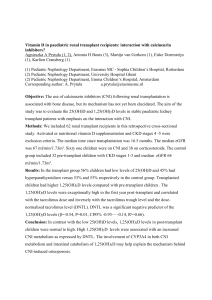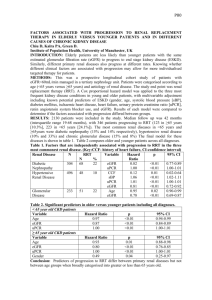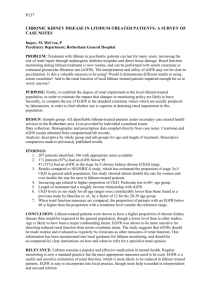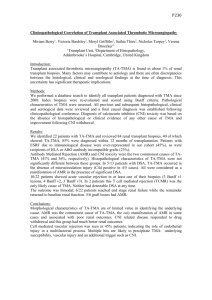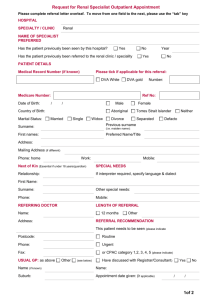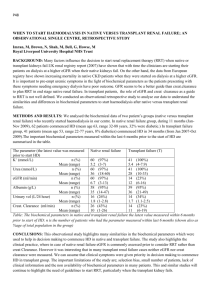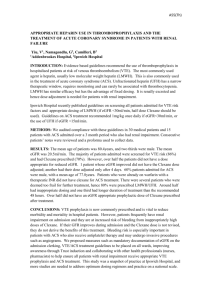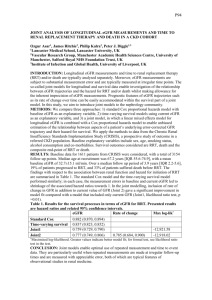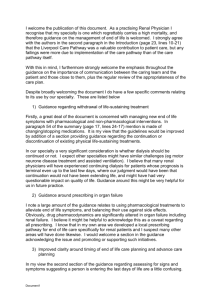Goswami Umesh Abstract 2015
advertisement
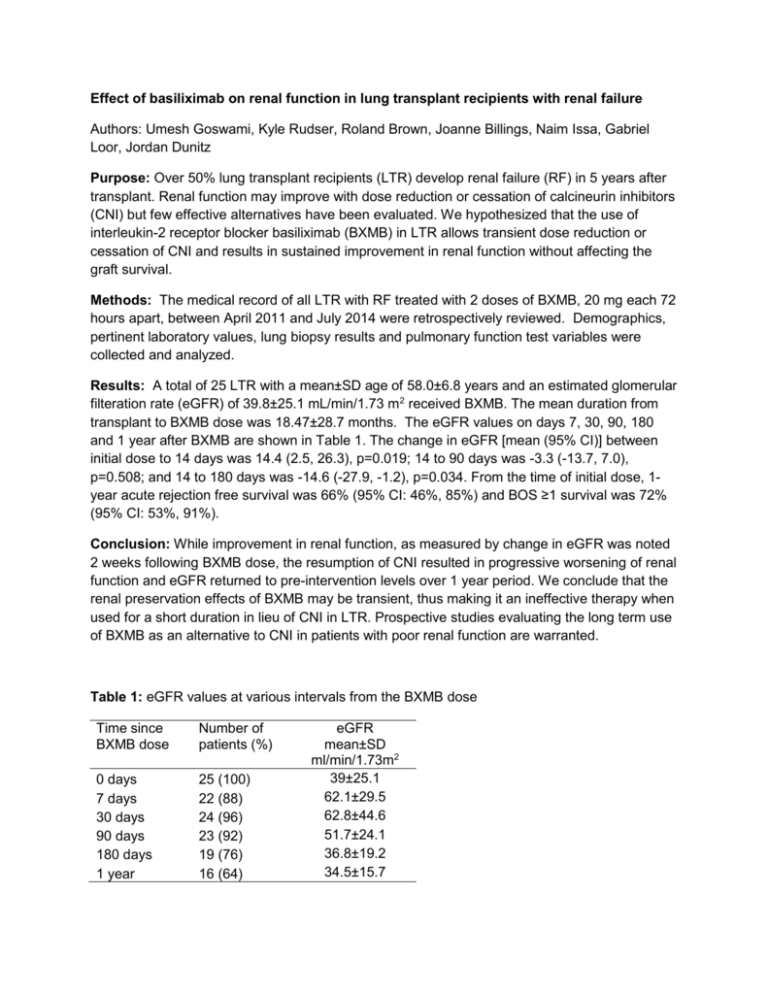
Effect of basiliximab on renal function in lung transplant recipients with renal failure Authors: Umesh Goswami, Kyle Rudser, Roland Brown, Joanne Billings, Naim Issa, Gabriel Loor, Jordan Dunitz Purpose: Over 50% lung transplant recipients (LTR) develop renal failure (RF) in 5 years after transplant. Renal function may improve with dose reduction or cessation of calcineurin inhibitors (CNI) but few effective alternatives have been evaluated. We hypothesized that the use of interleukin-2 receptor blocker basiliximab (BXMB) in LTR allows transient dose reduction or cessation of CNI and results in sustained improvement in renal function without affecting the graft survival. Methods: The medical record of all LTR with RF treated with 2 doses of BXMB, 20 mg each 72 hours apart, between April 2011 and July 2014 were retrospectively reviewed. Demographics, pertinent laboratory values, lung biopsy results and pulmonary function test variables were collected and analyzed. Results: A total of 25 LTR with a mean±SD age of 58.0±6.8 years and an estimated glomerular filteration rate (eGFR) of 39.8±25.1 mL/min/1.73 m2 received BXMB. The mean duration from transplant to BXMB dose was 18.47±28.7 months. The eGFR values on days 7, 30, 90, 180 and 1 year after BXMB are shown in Table 1. The change in eGFR [mean (95% CI)] between initial dose to 14 days was 14.4 (2.5, 26.3), p=0.019; 14 to 90 days was -3.3 (-13.7, 7.0), p=0.508; and 14 to 180 days was -14.6 (-27.9, -1.2), p=0.034. From the time of initial dose, 1year acute rejection free survival was 66% (95% CI: 46%, 85%) and BOS ≥1 survival was 72% (95% CI: 53%, 91%). Conclusion: While improvement in renal function, as measured by change in eGFR was noted 2 weeks following BXMB dose, the resumption of CNI resulted in progressive worsening of renal function and eGFR returned to pre-intervention levels over 1 year period. We conclude that the renal preservation effects of BXMB may be transient, thus making it an ineffective therapy when used for a short duration in lieu of CNI in LTR. Prospective studies evaluating the long term use of BXMB as an alternative to CNI in patients with poor renal function are warranted. Table 1: eGFR values at various intervals from the BXMB dose Time since BXMB dose Number of patients (%) 0 days 7 days 30 days 90 days 180 days 1 year 25 (100) 22 (88) 24 (96) 23 (92) 19 (76) 16 (64) eGFR mean±SD ml/min/1.73m2 39±25.1 62.1±29.5 62.8±44.6 51.7±24.1 36.8±19.2 34.5±15.7
